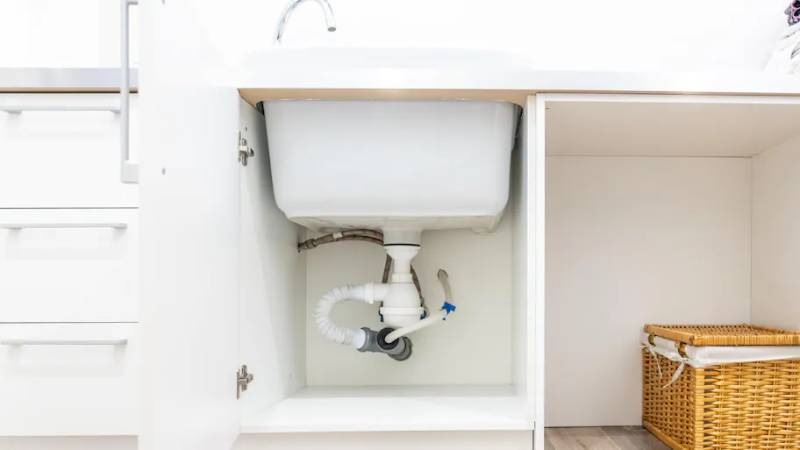
Troubleshooting a Leak Under the Sink: Common Causes and Solutions
So, you’ve checked under the sink but oh, no! You’ve discovered moisture, but you can’t find the source of the leak. Don’t worry, this is a common problem that often requires maintenance. In this blog post, we’ll explore various possibilities for the cause of the mystery leak and provide practical solutions. Whether it’s loose nuts, worn-out washers, or a leaking spray nozzle, we’ve got you covered. Additionally, we’ll share tips on how to locate the leak and prevent future issues.
-
Loose Nuts: The Culprit Could Be Expansion
- Expansion and contraction of pipes can cause connections to become loose.
- Check water supply lines and drain lines for potential leaks.
- Tighten the nuts by hand or with pliers if necessary.
-
Worn-Out Washers: Replace for a Tight Seal
- If tightening the nuts doesn’t solve the issue, check the washers.
- Worn-out washers can cause leaks.
- Replace the washers to ensure a proper seal.
-
Shutoff Valves: Watch for Wear and Tear
- Leaks can occur in shutoff valves due to worn-out gaskets or O-rings.
- These parts typically last 10 to 15 years.
- Consider replacing the valve if necessary.
-
Leaking P Trap: Tighten or Clean
- The P trap, located under the sink, may be the source of the leak.
- Tighten the coupling nuts and check the washers.
- Clean the P trap if tightening doesn’t resolve the issue.
-
Leaking Sink Drain Trap: Reseal or Replace
- Components in the sink drain trap can wear out.
- Reseal with plumber’s putty or replace the rubber gasket.
- Consider a full replacement if needed.
-
Leaking Spray Nozzle: Stem Connection and Replacement
- If the leak is from the cabinet ceiling, it might be a leaking spray nozzle.
- Tighten the stem connection on the hose.
- Replace the hose and nozzle if necessary.
-
Leaking Garbage Disposal: Flange or Internal Issues
- Check the sink flange for leaks at the top of the garbage disposal.
- Tighten or replace the flange or apply fresh plumber’s putty.
- Internal seal or housing issues may require a new disposal.
-
Leaking Dishwasher Parts: Check the Drain Hose
- Examine the dishwasher’s drain hose connected to the garbage disposal.
- Tighten the metal clamp or replace the hose if needed.
-
Leaking Due to Old Caulk: Re-caulk for a Proper Seal
- Cracked and brittle caulk can cause water to leak between the sink and counter.
- Re-caulk the sink to prevent further leakage.
- Look for signs of damaged caulk, such as cracks, gaps, discoloration, or loose tiles.
How to Check for a Leak Under the Sink:
- Clean the cabinet to remove any stored items and improve visibility.
- Use a flashlight to inspect the pipes and cabinet walls for signs of leakage.
- Place paper towels on the cabinet floor to identify dripping and locate the source.
- Wrap toilet paper around suspected pipe areas to make leaks more visible.
- Perform a basin test by filling both sinks with water and observing for leaks.
- Test the faucet thoroughly, including all modes and features, to check for leaks.
- Consider replacing old faucet parts or the faucet itself if necessary.
Remember – check under your sink! Water under the sink with no visible leak can be frustrating, but with proper troubleshooting, you can identify and resolve the issue. By tightening loose nuts, replacing worn-out washers, checking shutoff valves, and addressing specific components, you can fix most common causes of leaks. Remember to clean the cabinet, use paper towels or toilet paper, and perform a basin test to locate the source of the leak. Regular maintenance and prompt repairs will help prevent larger problems in the future.










